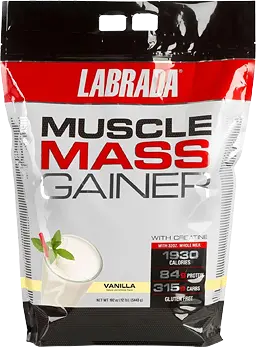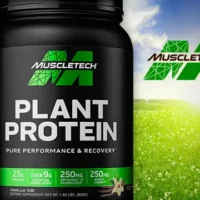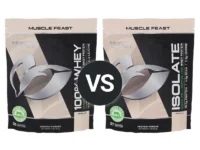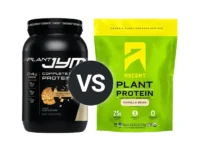Knowledge BaseYou're Questions Answered
Can you mix plant protein powder with milk?
Yes, you can mix plant protein powder with milk, and doing so can enhance both the flavor and nutritional profile of your shake. Plant-based protein powders, such as those derived from pea, rice, hemp, or soy, blend well with various types of milk, including dairy, almond, or oat milk. However, the choice of milk and the type of plant protein can affect the taste, texture, and digestibility of the shake.
Benefits of Mixing Plant Protein Powder with Milk
- Improved Taste and Creaminess
Many plant protein powders have a slightly earthy or grainy taste, especially when mixed with water. Milk, particularly dairy milk or plant-based milk alternatives like almond or oat milk, adds creaminess and a richer flavor, making the shake more palatable1. Flavored plant proteins (e.g., chocolate or vanilla) often blend exceptionally well with milk, enhancing the overall taste experience. - Boosted Nutritional Value
Combining plant protein powder with milk can significantly increase the protein content of your shake. Dairy milk, for instance, provides about 8g of protein per cup, while plant-based alternatives like soy milk also offer a protein boost. This combination helps to meet your daily protein needs, especially post-workout or for general muscle maintenance2. - Smoother Texture
Milk helps create a smoother texture compared to mixing with water, especially if the plant protein powder has a naturally gritty or grainy consistency. The fat content in milk contributes to a richer, creamier texture that makes the shake more enjoyable to drink3.
Considerations When Mixing Plant Protein Powder with Milk
- Lactose Sensitivity
While dairy milk can enhance the taste and texture of your shake, it may not be suitable for individuals who are lactose intolerant or sensitive to dairy. In these cases, plant-based milk alternatives such as almond, soy, or oat milk are better options, providing a lactose-free and often lower-calorie alternative4. - Consistency and Mixing
Some plant protein powders, particularly those derived from pea or rice, may require more shaking or blending to achieve a smooth consistency. Using a blender can help ensure that the powder fully dissolves and doesn't clump in the milk. - Caloric Content
Milk, especially whole milk, adds extra calories and fat to your shake. If you’re watching your caloric intake, consider using low-fat or plant-based milk alternatives, which can provide creaminess without excessive calories.
Mixing plant protein powder with milk can improve the taste, texture, and nutritional value of your shake. Dairy and plant-based milk alternatives can be used based on your dietary needs and preferences. Whether you’re looking for a creamy, protein-packed post-workout shake or a flavorful snack, combining plant protein powder with milk is an effective and versatile option.
- Young, V. R., & Pellett, P. L. (1994). Plant proteins in relation to human protein and amino acid nutrition. The American Journal of Clinical Nutrition, 59(5 Suppl), 1203S-1212S.
- Phillips, S. M., & Van Loon, L. J. (2011). Dietary protein for athletes: From requirements to optimum adaptation. Journal of Sports Sciences, 29(sup1), S29-S38.
- Hager, A.-S., Wolter, A., Czerny, M., Bez, J., Zannini, E., Arendt, E. K., & Becker, T. (2012). Investigation of product quality, sensory profile and ultrastructure of breads made from a range of commercial gluten-free flours compared to their wheat counterparts. European Food Research and Technology, 235, 333-344.
- Smith, J. P., Daifas, D. P., El-Khoury, W., Koukoutsis, J., & El-Khoury, A. (2004). Role of protein in sports nutrition. Nutrition Research Reviews, 17(2), 233-244.
Related Questions
Related Reviews

Your Answer
We are a participant in the Amazon Services LLC Associates Program, an affiliate advertising program designed to provide a means for us to earn fees by linking to Amazon.com and affiliated sites.




